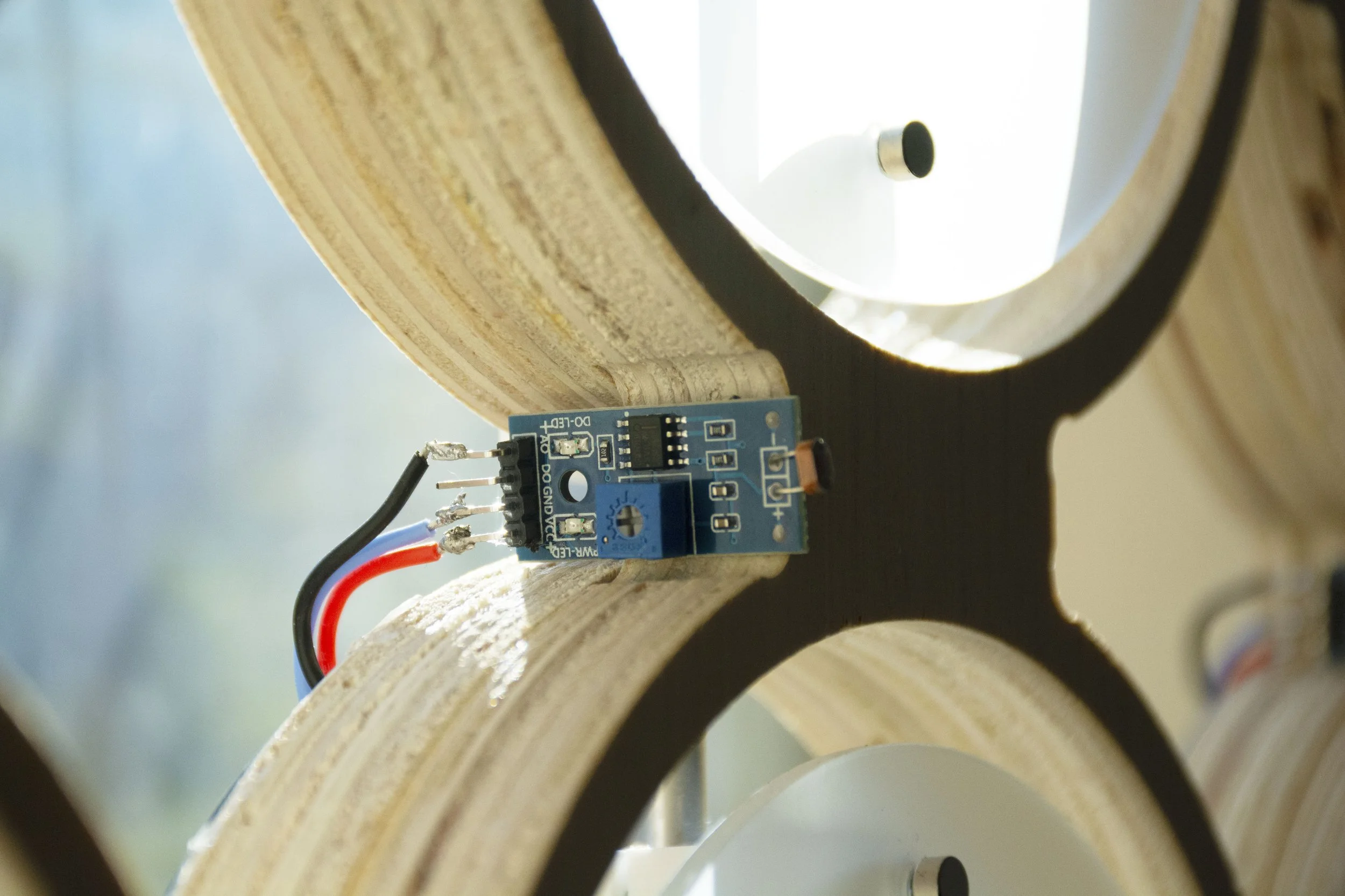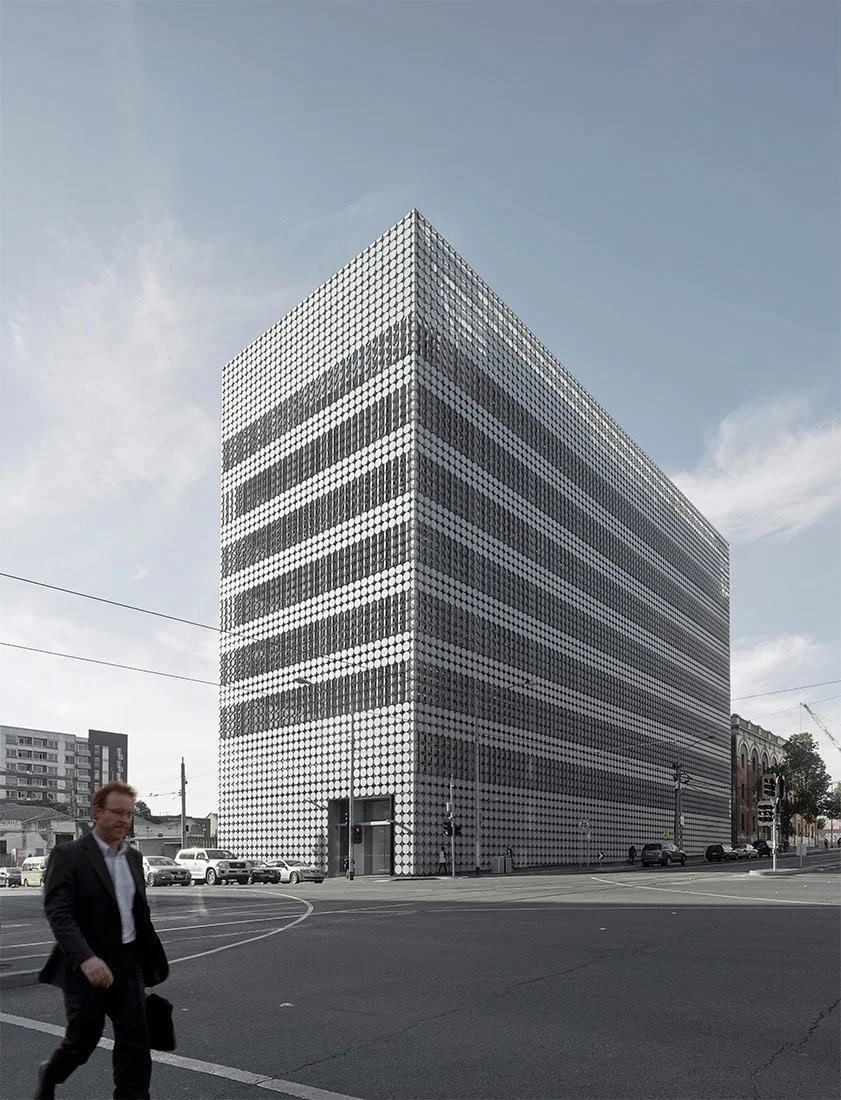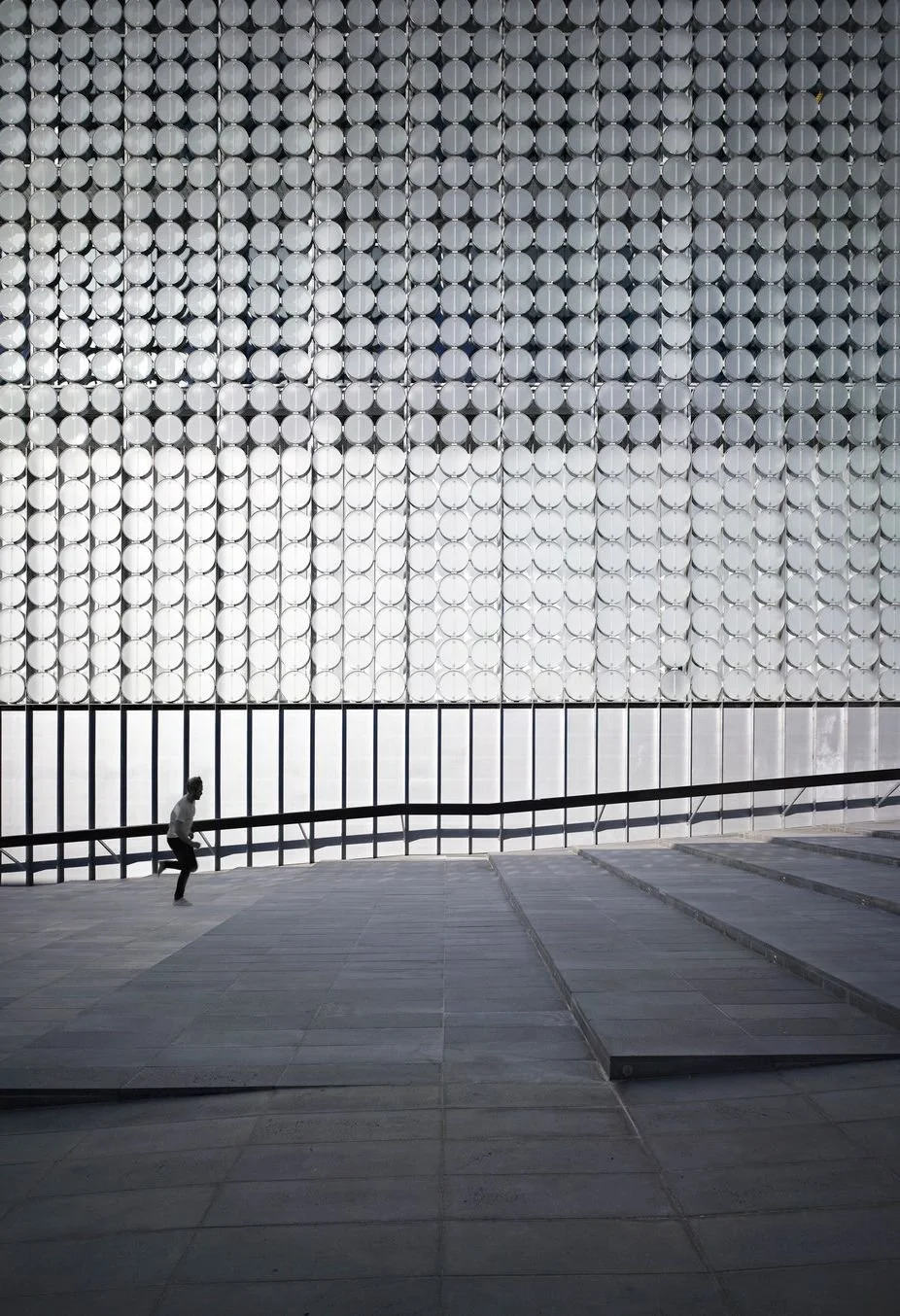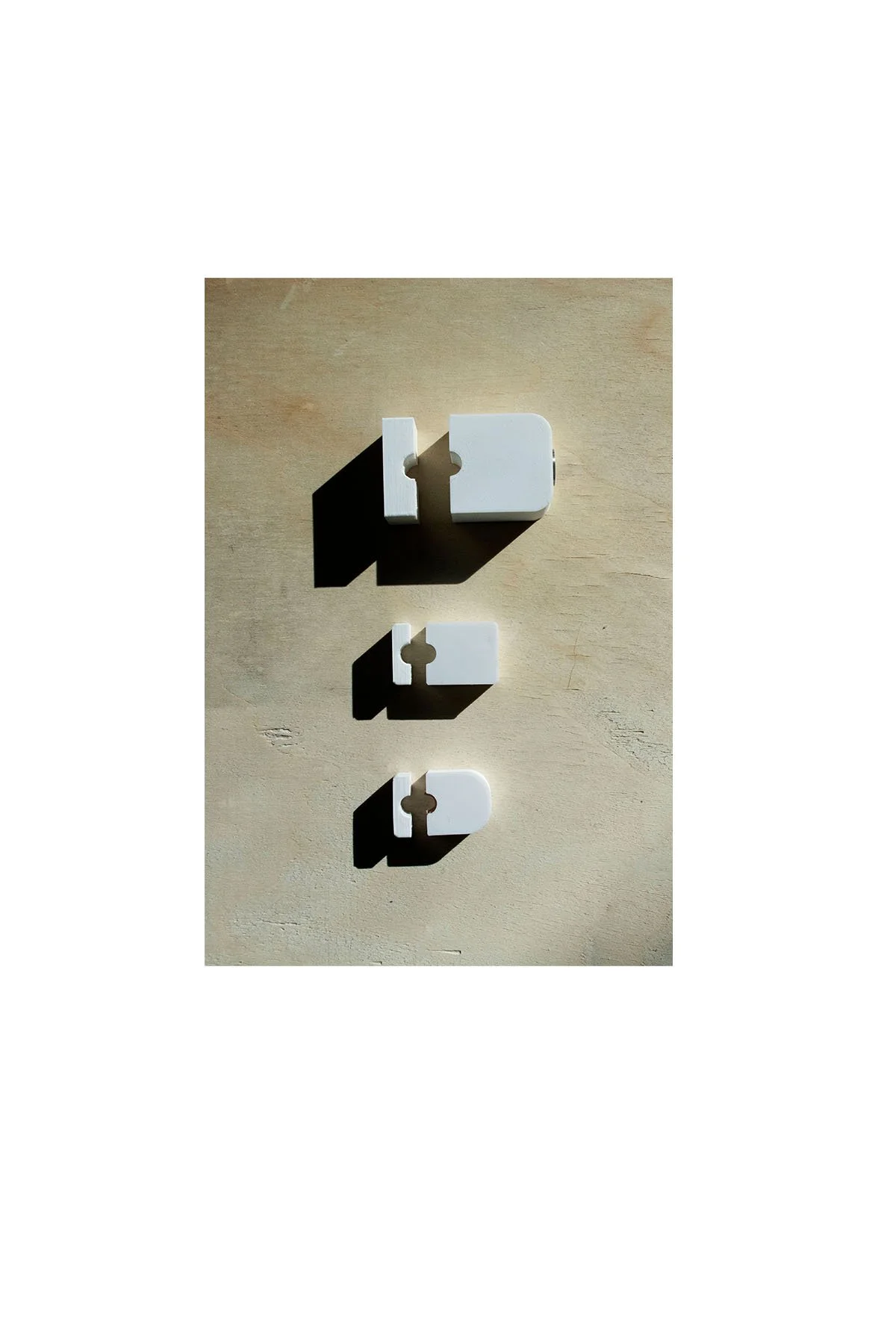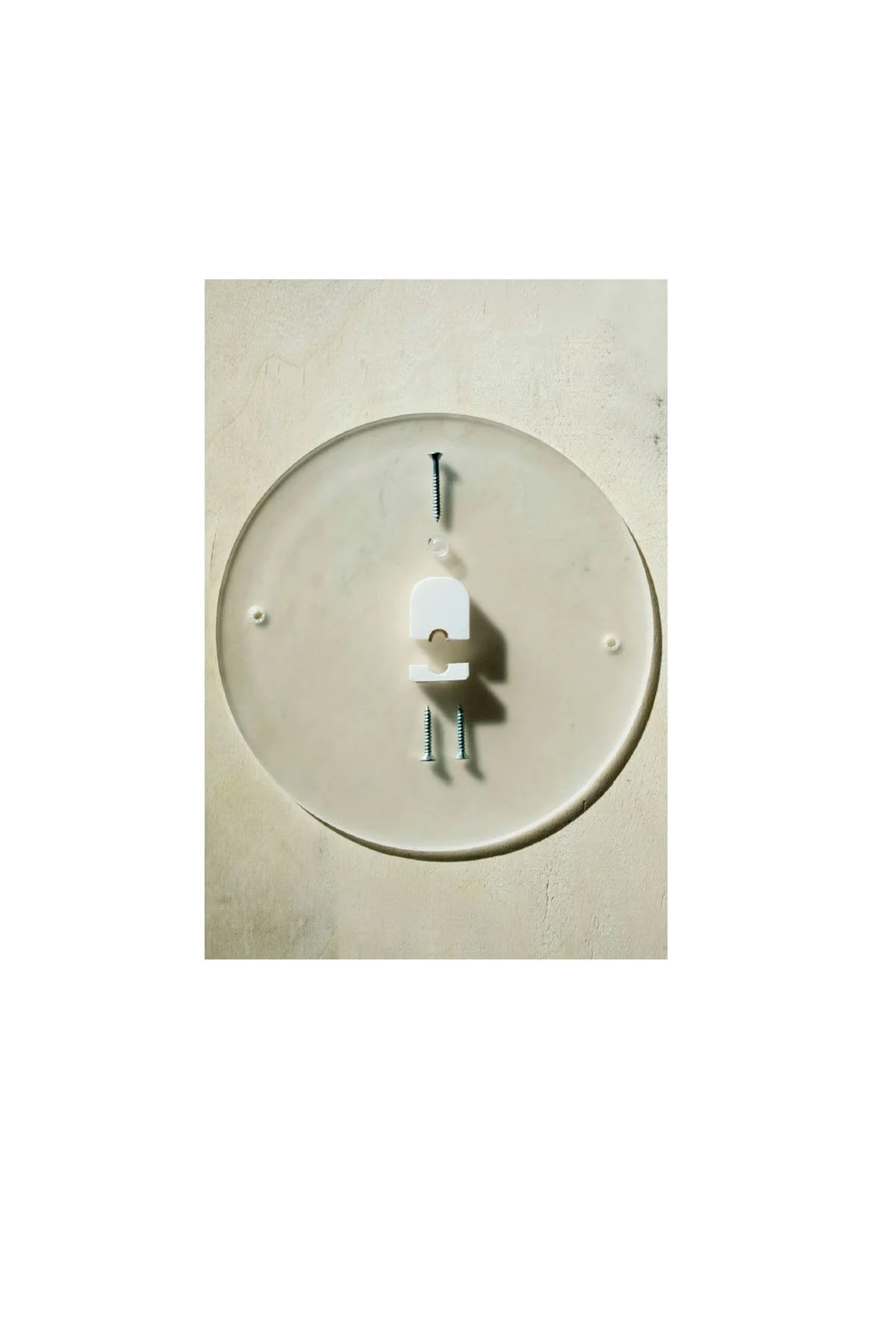Detail in Design: Reactive Systems
Prompt:
Analyze a building detail and recreate a 1/4 scale mockup providing a better scope of function.
Programs Used:
Rhino, Premier Pro, Photoshop, Autodesk Fusion 360
Case Study: RMIT Design Hub,
Sean Godsell
Presentation and Process.
The question analyzed within this project: What does it take to integrate common sensors at a building scale in order to create a reaction to environmental factors to optimize building function?
I chose Sean Godsell’s RMIT Design Hub to start researching environmentally active facade systems. The outer skin of this building consists of an automatic sun shading system. This system included building integrated photovoltaic cells (BIPV) that promote evaporative cooling and better internal air quality. The panels in this building were made to transcend with technology.
Using tool path simulation, Arduino technology, and 3D modeling software, I was able to prototype a facade system inspired by the RMIT Design Hub and demonstrate a different way to integrate sensors and finetune them to operate in a disk-detailed action. Tracking light levels in its surrounding environment this system utilizes a lighter and disk-oriented servo motor vs the RMIT building that utilizes a heavier actuator arm.
Frame Development
Disk development



